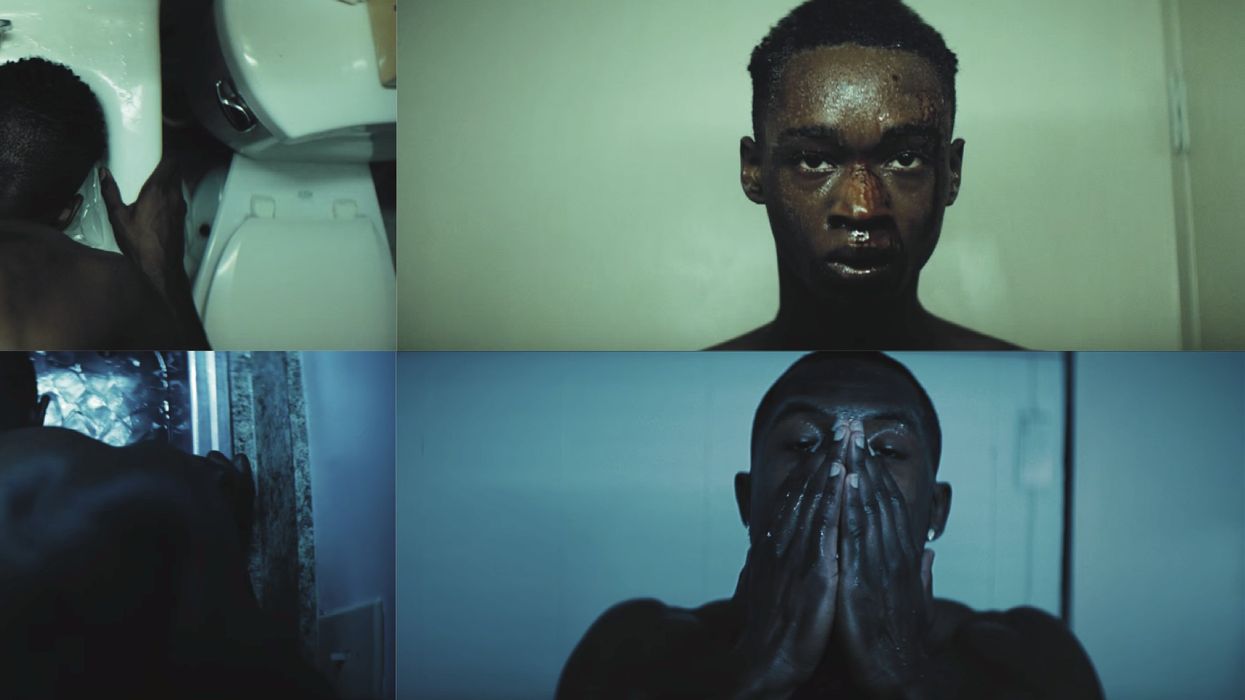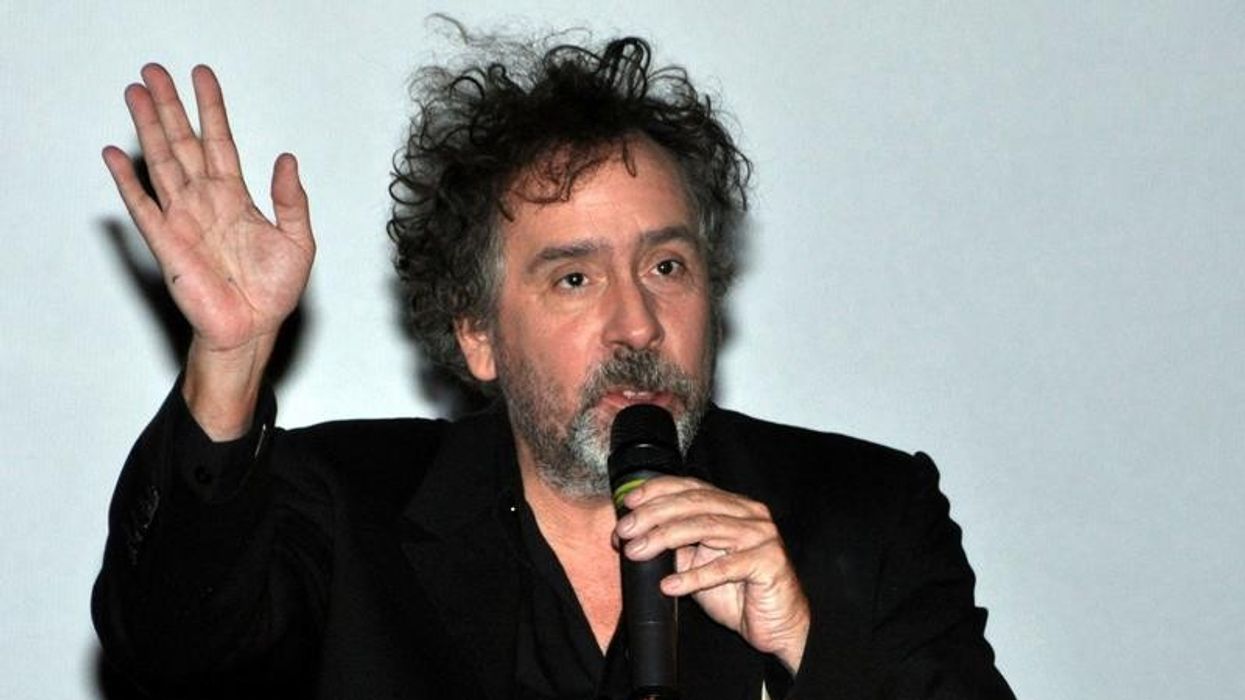Watch: The Most Stunning Cinematography of 2016
These visuals took our breath away.

Cinematography ain’t what it used to be, and that’s a good thing. With the emergence of drones and smart phones as legitimate filmmaking tools, new cinematic experiments are possible—quite literally introducing fresh perspectives onto the screen. Of course, it’s not about what you shoot with as much as how you shoot it, but this expansion of visual storytelling tools enables more visions to become realized. Thus, cinematography is at once getting more sweeping and more personal, more sumptuous and more natural.
That cinematic diversity is reflected in our top 10 list and the resulting video below. Yes, legends like Roger Deakins and Emmanuel Lubezki made the cut, but we also include unusual suspects for outstanding cinematography, like two black-and-white features, two documentaries, and even a sitcom.
As are many efforts in the No Film School community, this list was truly a collaborative endeavor. Video essayist Scout Tafoya edited our gorgeous supercut based on the passionate arguments in favor of each inclusion by our writers and editors from around the country. See why each of us contributed our particular choices below.
Moonlight
DP: James Laxton
Moonlight could have been shot like other indie films about the inner city: gritty, shaky cam, with a muted, neutral tone palette. That would have been the obvious choice. Instead, director Barry Jenkins and cinematographer James Laxton devised a lush visual landscape that brings South Central Miami to vivid life. The camera is more interested in poetry than pragmatics; its sweeping, almost operatic moves give the story a deeply passionate, larger-than-life feel. The entirely African American cast is lit with high-contrast greens, blues, and yellows that enrich their dark skin.
Laxton shot on the ARRI ALEXA Plus with Hawk V-Lite anamorphics, which he describes as "very sharp, contrasty lenses." For key lights, he often used LiteGear’s LiteMats. He monitored with Rec709 because its naturally contrasty look complemented the desired aesthetic.
“By no means were we attempting to present an observational understanding of the story," Laxton told ARRI. "The film is a fever dream and the audience is part of the dream."—Emily Buder

Fire at Sea (Fuocoammare)
Director/DP: Gianfranco Rosi
Documentaries aren’t generally known for their cinematography, but the fact that Italy’s foreign language Oscar entry Fire at Sea is on this list is only one way it breaks the mold. A vérité account shot by its director Gianfranco Rosi on an ARRI Amira, it weaves a dual narrative between a young Italian boy’s coming-of-age and the European migrant crisis. It’s composed much more like a narrative than a doc, due in part to Rosi’s “anti-documentary” approach. As he told No Film School, instead of chasing documentary stories, he trains his camera on a scene: "The frame is always important—and good light and good composition—and then within this frame things have to happen." —Liz Nord
Atlanta
DP: Christian Sprenger
Atlanta might be a TV show, but it's shot with a tremendous sense of cinematic style, and it documents the world of Atlanta in a fashion that feels accurate without being exploitative. There's a comfort with extreme color and source light that bounces back and forth between naturalism and baroque style, which is in sync with the storytelling of the show. They also use drones better than anybody else right now, which makes sense for a show in 2016. —Charles Haine

Knight of Cups
DP Emmanuel Lubezki
Knight of Cups, the fourth collaboration between Terrence Malick and his cinematographer Emmanuel Lubezki, is their most avant-garde and bizarrely effecting. It follows a screenwriter (Christian Bale) on a soul searching quest through his memories in search of the moments that sculpted his current state of misery and drift. His former lovers (among them Cate Blanchett, Natalie Portman, Imogen Poots, and Freida Pinto) pirouette through his subconscious and Lubezki's dazzling camera follows suit. The camera, like a pen writing calligraphy, spins circles around creation. Absolutely beautiful. —Scout Tafoya
Neon Demon
DP Natasha Braier
Natasha Braier has an incredible eye for composition and capturing light and color, which really showed in her ability to create the lurid world of Nicolas Winding Refn's Neon Demon. One shot that is particularly impressive required several mirrors to capture Elle Fanning's reflection to give the illusion that she was encased in a diamond. Truly remarkable. —V. Renée

The Eagle Huntress
DP Simon Niblet, with additional cameras Martina Radwan and Christopher Raymond
Pairing 700kg of the newest camera toys with the fine-tuned eye of experienced vérité DPs, feature documentary The Eagle Huntress is more cinematic than many narrative features out this year. DP Simon Niblet traveled with an enviable van of lensers, assistants, and drone operators. Additional footage came from the likes of DP Martina Radwan, who traveled through outer Mongolia with only a backpack. The cinematography is pioneering where new technologies meet traditional documentary storytelling. Following a young girl who is set to be the first female Eagle Hunter in Mongolian history, the trailblazing style captures the magic of wanting to soar. —Oakley Anderson-Moore
Arrival
DP Bradford Young
Bradford Young’s cinematography in Arrival takes some cues from the traditions of its sci-fi genres but manages to accomplish something wholly different. The visuals marry seamlessly repeated, geometrically framed shots almost devoid of color (reminiscent of 2001: A Space Odyssey) with soft, intimate images of flashback moments from protagonist Louise’s life with her daughter Hannah. Cycling through these styles with increasing frequency as the film reaches its climax works particularly well given the story’s final revelations. —Christopher Boone

The Eyes of My Mother
DP Zach Kuperstein
Zach Kuperstein is probably one name that won't pop up much throughout awards buzz over the next couple of months. That's a damn shame. He lensed what may be the most disturbing horror film of the year, and much of its startling imagery can be attributed to his decisions behind the camera. The black-and-white aesthetic of the film evokes comparisons to Eraserhead, but Kuperstein and director Nick Pesce managed to build an eerie world that stands alone. It's something we've never quite seen before. —Jon Fusco
Hail, Caesar!
DP Roger Deakins
Though this film was largely overlooked, Deakins, a frequent Coen Brothers collaborator, captures both the sun-drenched glamour of Hollywood in the 1950s, as well as an original take on the high-contrast quasi-noir look; he obviously enjoyed lighting the various genre pictures from the golden age of Hollywood (from Biblical epics to Esther Williams aqua-musicals). One wouldn't call this an "important" Coen Bros. film, but Deakins once again delivers behind the camera, and this it definitely deserves a second look. Deakins always brings a unique eye to his projects, and in Hail, Caesar! his work is particularly masterful. —Justin Morrow
Embrace of the Serpent
DP David Gallego
Black and white cinematography can be a controversial choice in modern cinema, but the imagery in Embrace of the Serpent is nothing short of stunning and—as the film is set in the early 1900s—shooting grayscale is thematically appropriate. The skillfully executed visuals transport us through time to the gorgeous landscapes of tribal Amazonian Colombia, where the story of a shaman from an isolated tribe who leads white men through the jungle takes place. The color choice also recalls many films of its story’s period, bringing to light Ciro Guerra’s skillful commentary on colonialism. —Sophia Harvey











